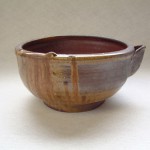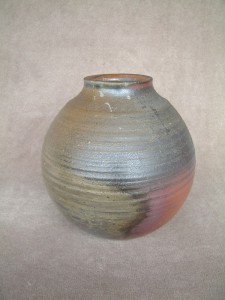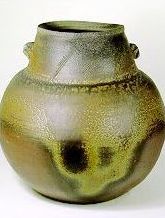The Traditional Beauty of Earth & Fire: Bizen Ware
Bizen Ware: Characteristics

Bizen Ware is counted along with Seto, Tokoname, Tanba, Shigaraki and Echizen as representing the Six Old Kilns of Japan’s Middle Ages. The history behind Bizen Ware is ancient. It is said that the time of its birth began when potters, who had been running the manufacturing of Sue Ware from the Kofun Era, started making more practical and durable everyday goods, spanning from the Heian Era to the early Kamakura Era.

Bizen Ware’s attractiveness lies in its plain simplicity. Before long, its unglazed and refined firing came to be appreciated by masters of the tea ceremony and Bizen Ware was produced in large numbers as masterpiece tea utensils during the Momoyama Era. In its approximately 1,000 years of history up to the present day, not a day has passed when smoke didn’t rise from the kilns of Bizen City’s streets. Five of Japan’s Living National Treasures were born there: the late Toyo Kaneshige, the late Kei Fujiwara, the late Toshu Yamamoto, the late Yu Fujiwara and Jun Isesaki.

From this meeting of fire, earth and people, Bizen Ware was created in kilns where high temperatures of 1200 degrees Centigrade were maintained up to 2 weeks to create a reddish-brown surface texture. Its simple beauty, which brings a mysterious warmth and resurrects a gradually fading core of nature and humanity in contemporary society has impressed many people, and has garnered devotees here and abroad. Even these days, this long historical tradition without peer that has a charm that can be called timeless and should be passed on is being continued by over 300 excellent potters. These potters are preparing kilns in the Bizen area, and creating wonderful products which are being sent all over the world.
>> History
>> Potter
>> Photos
Article and photos by Bizen City Tourist Association
